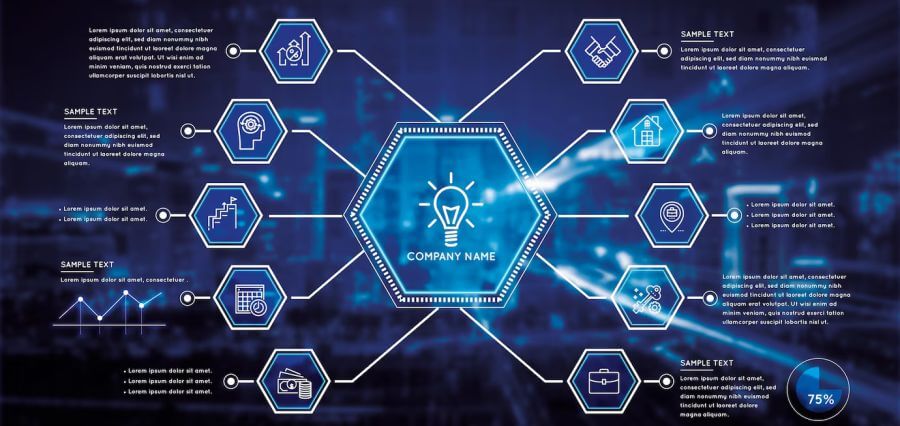Running a business today means staying ahead with tech. You can boost efficiency by integrating innovative solutions. These strategies include using enhanced data processing options like bank statement converters, which streamline your operations and save time.
Practical examples from industry leaders show the real-world benefits of embracing these technologies. You might wonder how these innovations fit into your workflow and where to start.
There is much to unpack on the road to improve business efficiency through technology, so keep reading and learn more.
1. Streamlining Operations with Automated Workflow Systems
Automated workflow systems stand out as the most impactful strategy for enhancing business efficiency through technology. These systems replace repetitive, manual tasks with automated processes, freeing up your team to focus on higher-value activities.
For instance, imagine you have a mountain of invoices to process each month. Instead of spending hours manually entering data, an automated system can capture and categorize information quickly and accurately.
Experts suggest that integrating these systems can reduce errors significantly and boost productivity by more than 30%. Companies like Zapier or Microsoft Power Automate offer robust solutions tailored for various industries.
2. Enhancing Data Management with Advanced Analytics
Enhancing data management through advanced analytics is another key strategy. With automation in place, you will handle vast amounts of data more efficiently.
Advanced analytics tools help you make sense of this data by identifying trends and providing actionable insights. For example, customer behavior analysis can guide marketing strategies, or predictive maintenance can reduce equipment downtime.
Tools like Tableau and Microsoft Power BI offer powerful features for effortlessly visualizing and interpreting complex datasets, but you should always look for alternatives that best suit your industry.
3. Leveraging Cloud Computing for Scalability and Flexibility
Implementation of automated workflow systems is another foundational strategy, but leveraging cloud computing brings scalability and flexibility to your business operations. By migrating your infrastructure to the cloud, you reduce the need for physical servers and IT maintenance.
Cloud services such as Amazon Web Services (AWS) or Microsoft Azure allow seamless access to data from anywhere in the world. Imagine integrating bank statement conversion software into your financial system; this tool can automatically update transactions in real-time, improving accuracy.
Additionally, cloud computing supports rapid scaling of resources based on demand. This agility ensures that businesses remain adaptable amidst changing market conditions.
4. Optimizing Customer Interaction with AI-Powered Chatbots
With cloud computing offering scalability, optimizing customer interaction with AI-powered chatbots represents another pivotal strategy for boosting efficiency. These intelligent systems handle customer inquiries 24/7, providing instant responses and freeing up your support team for more complex issues.
For example, integrating a chatbot on your website can streamline the process of answering frequently asked questions or guiding customers through purchasing steps.
Chatbots learn from interactions over time, improving their accuracy and effectiveness. This constant learning means they better predict customer needs and deliver personalized experiences.
5. Boosting Team Collaboration with Unified Communication Tools
Unified communication tools take team collaboration to the next level, significantly enhancing business efficiency. These platforms integrate messaging, video conferencing, and file sharing into one cohesive system.
For instance, tools like Slack or Microsoft Teams provide a central hub where employees can easily communicate and collaborate on projects in real-time. These tools allow a team to have all project files accessible in one place while simultaneously chatting with team members and scheduling meetings, which can be a game changer.
This streamlined communication reduces delays caused by fragmented email chains or misaligned schedules and promotes department transparency since everyone stays informed about project progress and updates.
6. Enhancing Security with Advanced Cybersecurity Measures
Another critical strategy involves enhancing security with advanced cybersecurity measures. Start with implementing multi-factor authentication (MFA), end-to-end encryption, and real-time threat monitoring which helps safeguard sensitive data.
Consider using platforms like CrowdStrike or Palo Alto Networks for comprehensive security solutions. These tools offer proactive defense mechanisms that detect and neutralize threats before they escalate.
Besides protecting your assets, advanced cybersecurity helps you build customer trust, demonstrating that you take data privacy seriously. This solid foundation allows businesses to operate without interruptions caused by breaches or data loss, ensuring smooth and secure operations year-round. When considering upgrading your company’s technology, it’s also important to stay informed about the different bluetooth versions, as these may impact the performance and compatibility of devices within your business setting.
7. Transforming Supply Chain Efficiency with IoT Technologies
Integrating Internet of Things (IoT) technologies can transform supply chain efficiency. By deploying smart sensors and RFID tags, businesses gain real-time visibility into their inventory levels, leading to smarter decision-making.
Imagine a retail store using IoT-enabled shelves that automatically alert the system when stock runs low. This proactive approach minimizes the risk of out-of-stock situations and ensures timely restocking.
Moreover, logistics companies benefit by tracking shipments in transit, providing accurate delivery estimates, and enhancing customer satisfaction. IoT technology also facilitates predictive maintenance for equipment, reducing downtime and ensuring smooth operations.
8. Improving Decision-Making with AI-Driven Insights
Lastly, improving decision-making with AI-driven insights is essential. Artificial Intelligence (AI) algorithms analyze vast amounts of data to uncover patterns and predict future trends.
Imagine your marketing team leveraging AI to pinpoint customer preferences and tailor campaigns accordingly. This precise targeting can boost conversion rates significantly.
Financial departments benefit too; AI helps in forecasting cash flows and identifying potential risks before they become issues. Companies like IBM Watson or Google Cloud AI offer robust platforms for these purposes.
Final Words
Adopting technological innovations is crucial for staying competitive. Embrace automation, AI, and IoT to streamline operations and improve decision-making. Stay agile by continually assessing new technologies and integrating them thoughtfully into your business strategy.
The future holds rapid advancements; adaptability will be key. To stay ahead in the ever-evolving tech landscape, focus on fostering a culture of continuous learning and innovation within your team.














